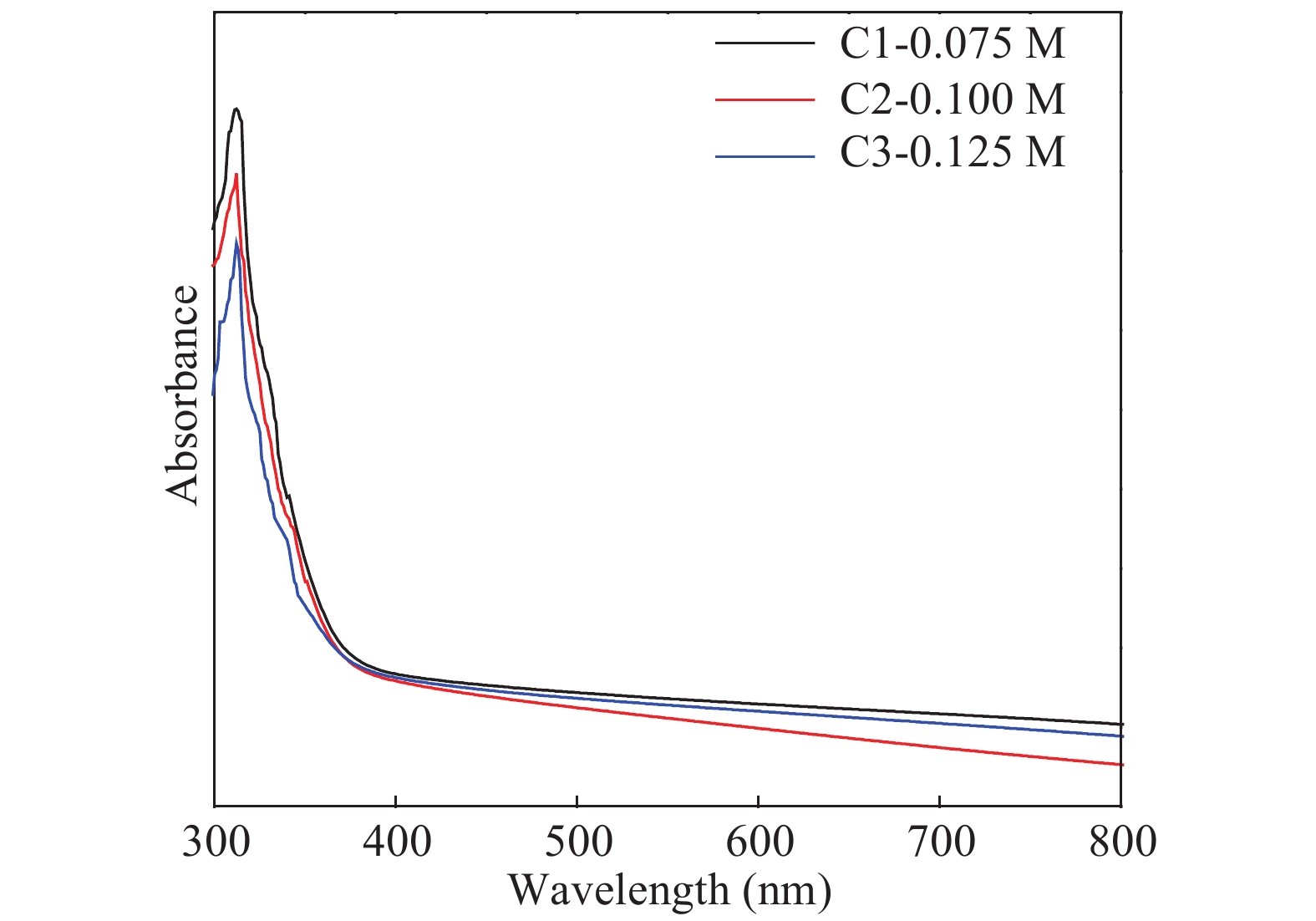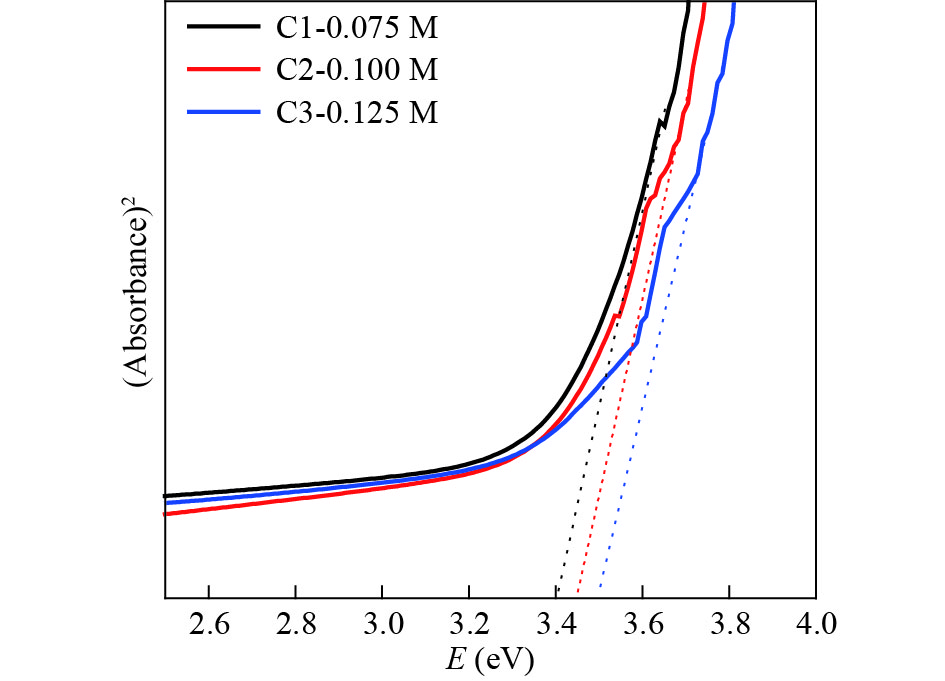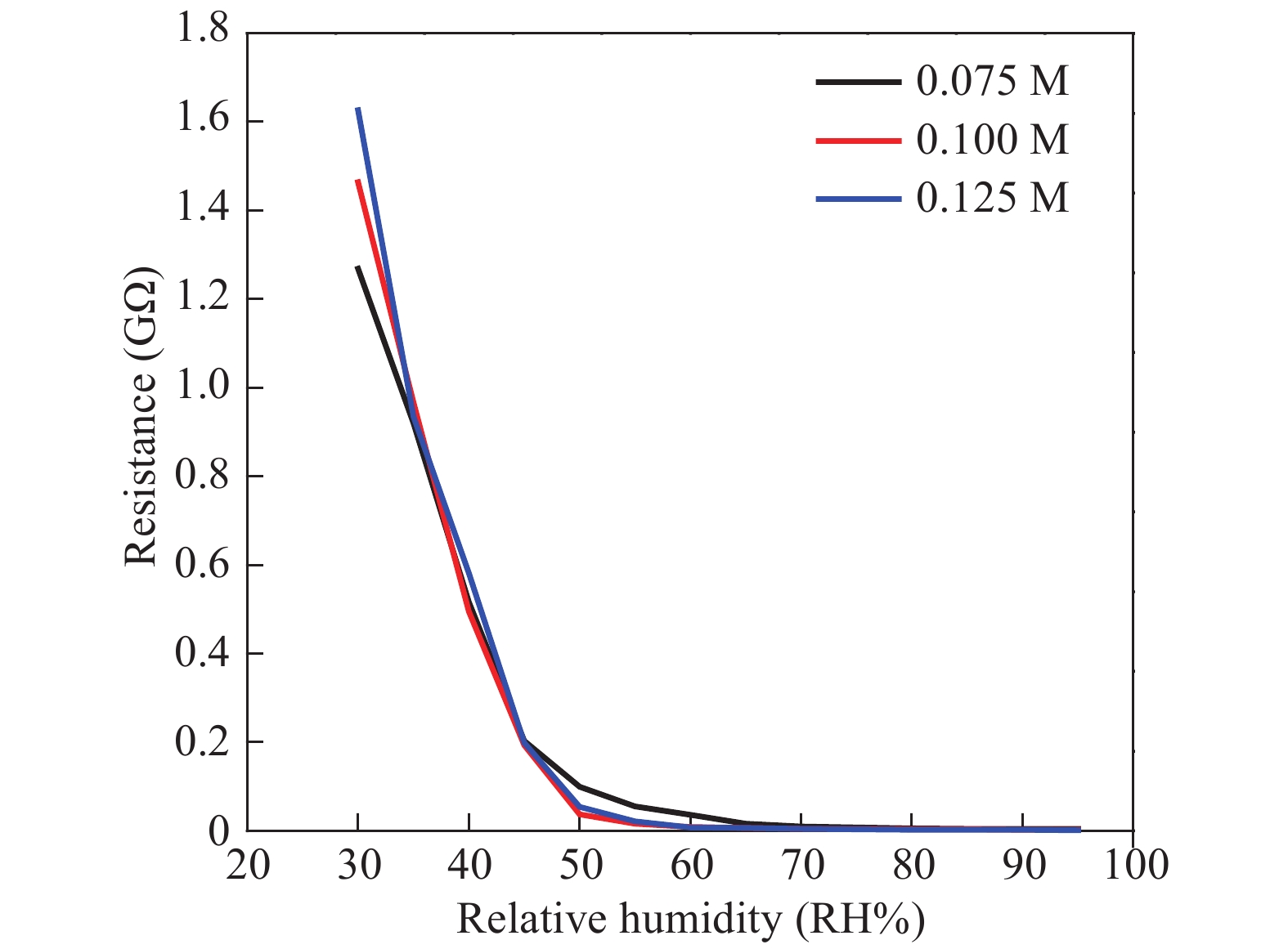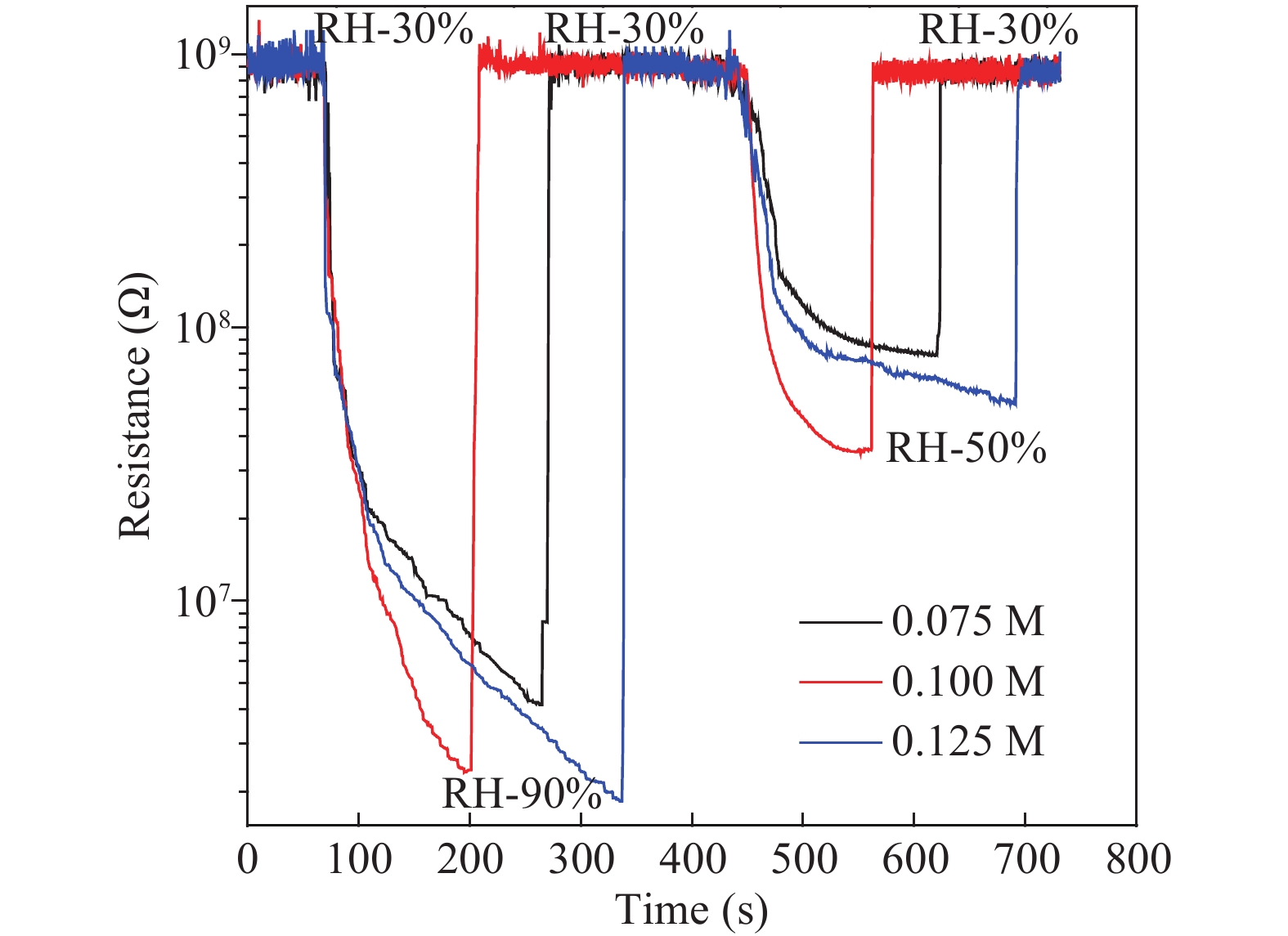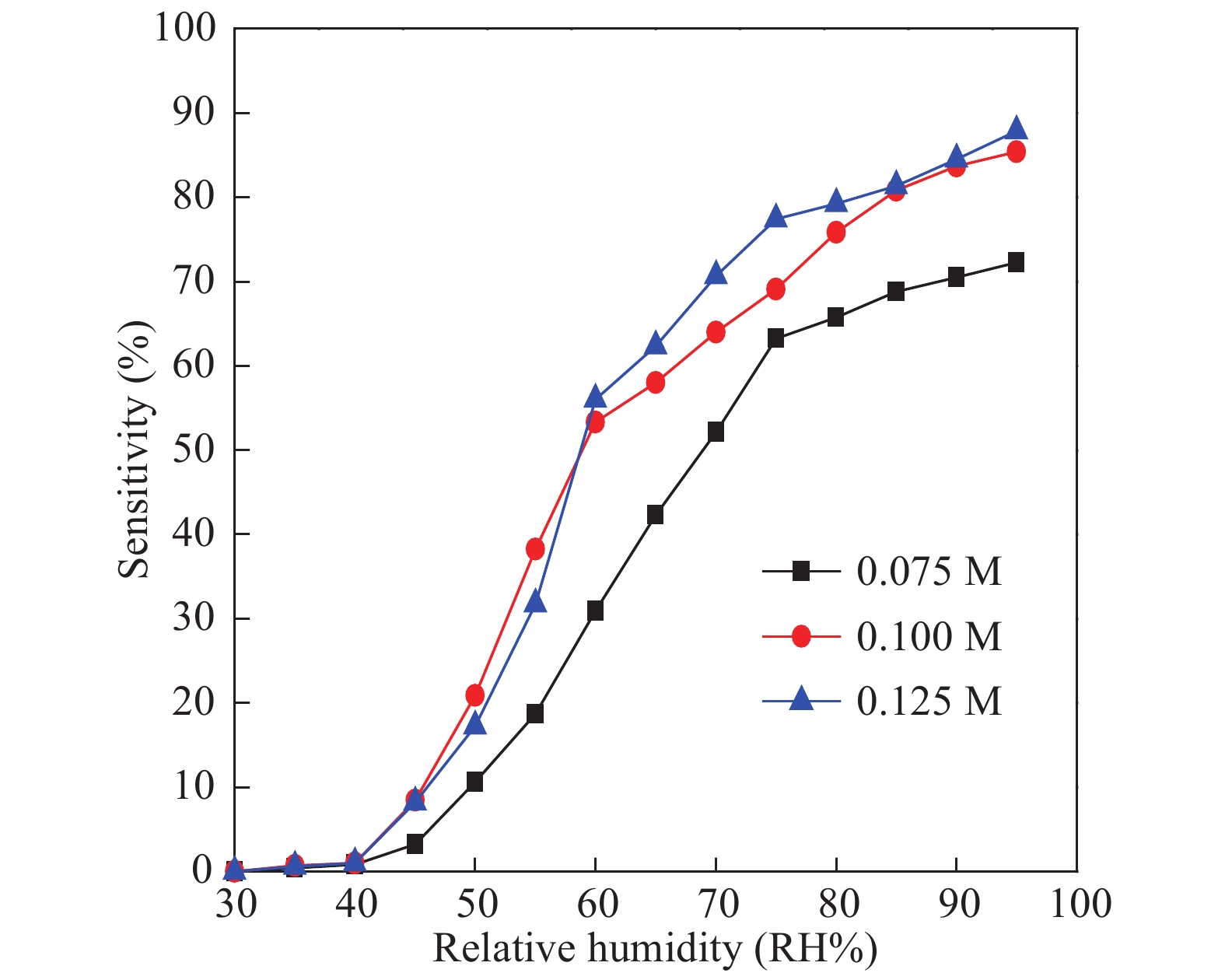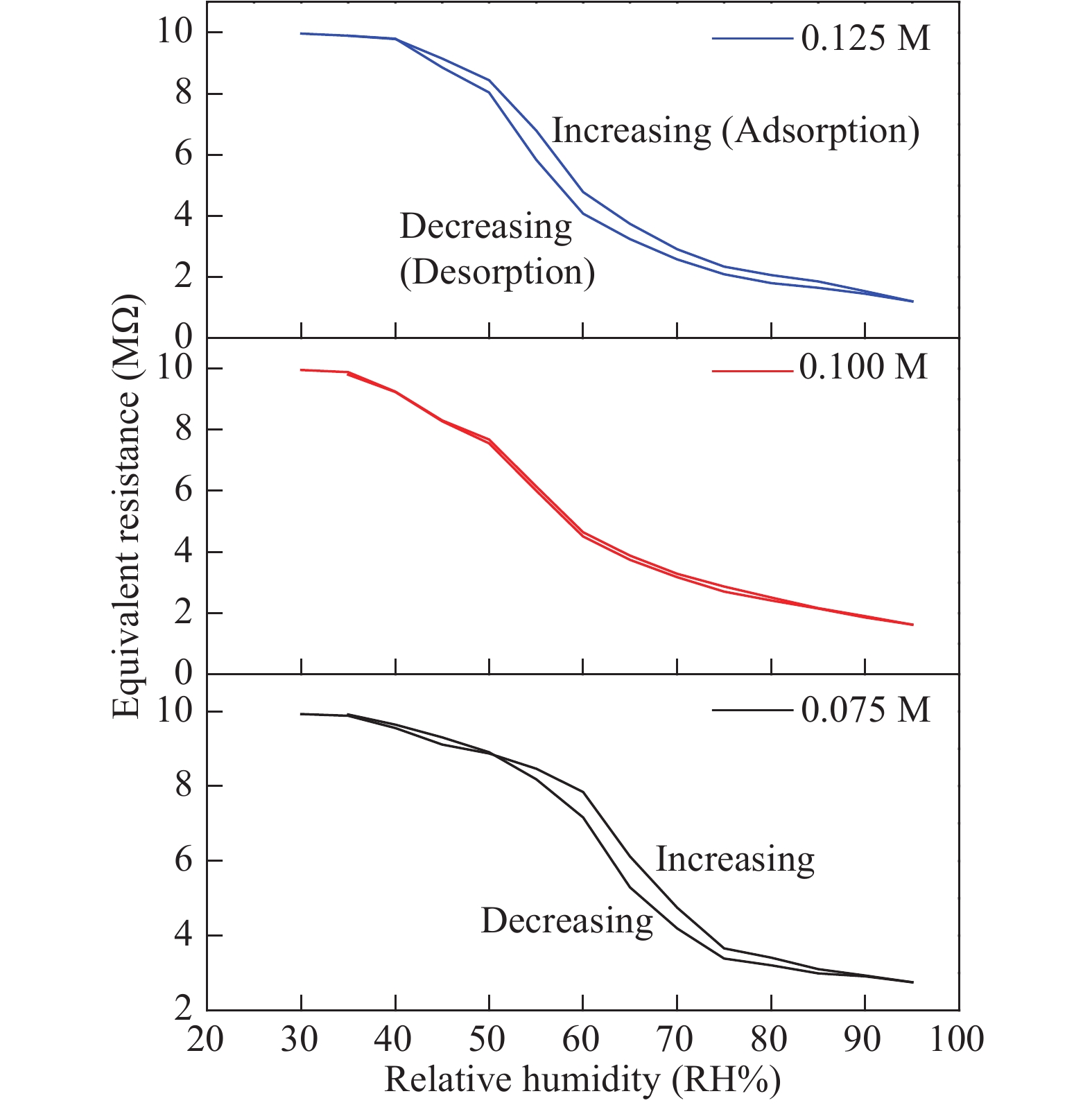| Citation: |
Dipak L Gapale, Sandeep A Arote, Balasaheb M Palve, Ratan Y Borse. Influence of precursor solution concentration on the structural, optical and humidity sensing properties of spray-deposited TiO2 thin films[J]. Journal of Semiconductors, 2018, 39(12): 122003. doi: 10.1088/1674-4926/39/12/122003
****
D L Gapale, S A Arote, B M Palve, R Y Borse, Influence of precursor solution concentration on the structural, optical and humidity sensing properties of spray-deposited TiO2 thin films[J]. J. Semicond., 2018, 39(12): 122003. doi: 10.1088/1674-4926/39/12/122003.
|
Influence of precursor solution concentration on the structural, optical and humidity sensing properties of spray-deposited TiO2 thin films
DOI: 10.1088/1674-4926/39/12/122003
More Information
-
Abstract
In the present paper, the influence of precursor concentration on the structural, optical, and humidity sensing properties of spray-deposited titanium dioxide (TiO2) films are investigated. The TiO2 thin films were successfully deposited by spraying different precursor concentrations such as 0.075 M, 0.1 M, and 0.125 M of titanium trichloride solution onto glass substrates. X-ray diffractometry (XRD) studies confirmed the polycrystalline anatase phase of TiO2 with dominant (101) plane. The crystallite size was found to increase with the increase in precursor concentration. The micro-strain and dislocation density in the film was observed to decrease as the crystallite size increased. The UV–vis spectra confirmed the optical absorbance edge of the samples shifted toward lower wavelengths with increased precursor concentration. The humidity sensing properties of the synthesized material were measured by monitoring the change in resistance of the sample with the change in relative humidity. The material synthesized with 0.1 M precursor concentration, by using the spray pyrolysis method, shows good sensitivity and has a response time of 77.5 s and fast recovery time of 3 s.-
Keywords:
- titanium dioxide,
- spray pyrolysis,
- structural,
- electrical,
- gas sensing
-
References
[1] Vijayalakshmi R, Rajendran V. Synthesis and characterization of nano-TiO2 via different methods. Arch Appl Sci Res, 2012, 4(2): 1183[2] Bedikyan L, Zakhariev S, Zakharieva M. Titanium dioxide thin films: preparation and optical properties. J Chem Technol Metall, 2013, 48(6): 555[3] Zhou L J, Hoffmann R C, Zhao Z, et al. Chemical bath deposition of thin TiO2-anatase films for dielectric applications. Thin Solid Films, 2008, 516(21): 7661 doi: 10.1016/j.tsf.2008.02.042[4] Chung M H, Liu W J. Study of dye-sensitized solar cell application of TiO2 nanostructured films synthesis by hydrothermal process. Int Conf Electronics Packaging (ICEP), 2016: 669[5] Fakharuddin A, Giacomo F D, Palma A L, et al. Vertical TiO2 nanorods as a medium for stable and high-efficiency perovskite solar modules. ACS Nano, 2015, 9(8): 8420 doi: 10.1021/acsnano.5b03265[6] Schneider J, Matsuoka M, Takeuchi M, et al. Understanding TiO2 photocatalysis: mechanisms and materials. Chem Rev, 2014, 114(19): 9919 doi: 10.1021/cr5001892[7] Tshabalala Z P, Shingange K, Cummings F R, et al. Ultra-sensitive and selective NH3 room temperature gas sensing induced by manganese-doped titanium dioxide nanoparticles. J Colloid Interf Sci, 2017, 504(15): 371[8] Hu T, Sun X, Sun H, et al. Flexible free-standing graphene-TiO2 hybrid paper for use as lithium ion battery anode materials. Carbon, 2013, 51: 322 doi: 10.1016/j.carbon.2012.08.059[9] Nakaruk A, Sorrell C. Conceptual model for spray pyrolysis mechanism: fabrication and annealing of titania thin films. J Coatings Technol Res, 2010, 7(5): 665 doi: 10.1007/s11998-010-9245-6[10] Mechiakh R, Meriche F, Kremer R, et al. TiO2 thin films prepared by sol–gel method for waveguiding applications: correlation between the structural and optical properties. Opt Mater, 2007, 30(4): 645 doi: 10.1016/j.optmat.2007.02.047[11] Bai J, Zhou B X. Titanium dioxide nanomaterials for sensor applications. Chem Rev, 2014, 114(19): 10131 doi: 10.1021/cr400625j[12] Zakrzewska K, Radecka M. TiO2-based nanomaterials for gas sensing—influence of anatase and rutile contributions. Nanoscale Res Lett, 2017, 12: 89 doi: 10.1186/s11671-017-1875-5[13] Huang S J, Lee H K, Kang W H, et al. Preparation and characterization of proton conductive phosphosilicate membranes based on inorganic–organic hybrid materials Bull. Korean Chem Soc, 2005, 26: 241 doi: 10.5012/bkcs.2005.26.2.241[14] Liang J G, Kim E S, Wang C, et al. Thickness effects of aerosol deposited hygroscopic films on ultra-sensitive humidity sensors. Sens Actuators B, 2018, 265(15): 632[15] Patil L A, Suryawanshi D, Pathan I G, et al. Effect of variation of precursor concentration on structural, microstructural, optical and gas sensing properties of nanocrystalline TiO2 thin films prepared by spray pyrolysis techniques. Bull Mater Sci, 2013, 36(7): 1153 doi: 10.1007/s12034-013-0597-2[16] Okuya M, Prokudina N A, Mushika K, et al. TiO2 thin films synthesized by the spray pyrolysis deposition (SPD) technique. J Eur Ceram Soc, 1999, 19: 903 doi: 10.1016/S0955-2219(98)00341-0[17] Nasser S A, Afify H H, El-Hakim S A, et al. Structural and physical properties of sprayed copper–zinc oxide films. Thin Solid Films, 1998, 315: 327 doi: 10.1016/S0040-6090(97)00757-8[18] Kavitha R, Meghani S, Jayaram V, et al. Synthesis of titania films by combustion flame spray pyrolysis technique and its characterization for photocatalysis. Mater Sci Eng B, 2007, 139: 134 doi: 10.1016/j.mseb.2007.01.040[19] Chakraborty A, Mondal T, Bera S K, et al. Effects of aluminum and indium incorporation on the structural and optical properties of ZnO thin films synthesized by spray pyrolysis technique. Mater Chem Phys, 2008, 112: 162 doi: 10.1016/j.matchemphys.2008.05.047[20] Soloman D H, Hawthorne D G. Chemistry of pigments and fillers. New York: Wiley, 1983[21] Nakaruk A, Ragazzon D, Sorrell C C, et al. Anatase – rutile transformation through high-temperature annealing of titania films produced by ultrasonic spray pyrolysis. Thin Solid Films, 2010, 518: 3735 doi: 10.1016/j.tsf.2009.10.109[22] Diebold U. The surface science of titanium dioxide surface. Sci Rep, 2003, 48: 53 doi: 10.1016/S0167-5729(02)00100-0[23] Augustin A K, Udupa R, Udaya B K, et al. Crystallite size measurement and microstrain analysis of electrodeposited copper thin film using Williamson-Hall method. AIP Conf Proc, 2016, 1728: 020492 doi: 10.1063/1.4946543[24] Bushroa A R, Rahbari R G, Masjuki H H, et al. Approximation of crystallite size and microstrain via XRD line broadening analysis in TiSiN thin films. Vacuum, 2012, 86: 1107 doi: 10.1016/j.vacuum.2011.10.011[25] Wang Y Q, Tang W, Zhang L, et al. Crystalline size effects on texture coefficient, electrical and optical properties of sputter-deposited Ga-doped ZnO thin films. J Mater Sci Technol, 2015, 31(2): 175 doi: 10.1016/j.jmst.2014.11.009[26] Sagadevan S. Synthesis and electrical properties of TiO2 nanoparticles using a wet chemical technique. Am J Nanosci Nanotechnol, 2013, 1(1): 27 doi: 10.11648/j.nano.20130101.16[27] Perednis D, Gauckler L J. Thin film deposition using spray pyrolysis. J Electroceram, 2005, 14(2): 103 doi: 10.1007/s10832-005-0870-x[28] Barir R, Benhaoua B, Benhamida S, et al. Effect of precursor concentration on structural optical and electrical properties of NiO thin films prepared by spray pyrolysis. J Nanomater, 2017, 2017: 5204639[29] Fazel Y, Christo K, Churamani G, et al. Tunable band gap in graphene by the controlled adsorption of water molecules. Small, 2010, 6(22): 2535 doi: 10.1002/smll.201001384[30] Yadav B C, Srivastava A K, Sharma P, et al. Resistance based humidity sensing properties of TiO2. Sens Transduct J, 2007, 81(7): 1348[31] Farahani H, Wagiran R, Hamidon M N. Humidity sensors principle, mechanism, and fabrication technologies: a comprehensive review. Proc AMDP, 2017, 1: 408 doi: 10.3390/proceedings1040408[32] Park J Y, Lee Y J, Jun K W, et al. Chemical synthesis and characterization of highly oil dispersed MgO nanoparticles. J Ind Eng Chem, 2006, 12(6): 882[33] Shimizu Y, Arai H, Seiyama T. Theoretical studies on the impedance-humidity characteristics of ceramic humidity sensors. Sens Actuators, 1985, 7: 11 doi: 10.1016/0250-6874(85)87002-5[34] Sasikumar M, Subiramaniyam N P. Microstructure, electrical and humidity sensing properties of TiO2/polyaniline nanocomposite films prepared by sol–gel spin coating technique. J Mater Sci, 2018, 29(9): 7099[35] Chantarawong D, Onlaor K, Thiwawong T, et al. TiO2 nanoparticles thin film prepared by electrostatic spray deposition technique for humidity-sensing device. Adv Mater Res, 2015, 1131: 153 doi: 10.4028/www.scientific.net/AMR.1131 -
Proportional views





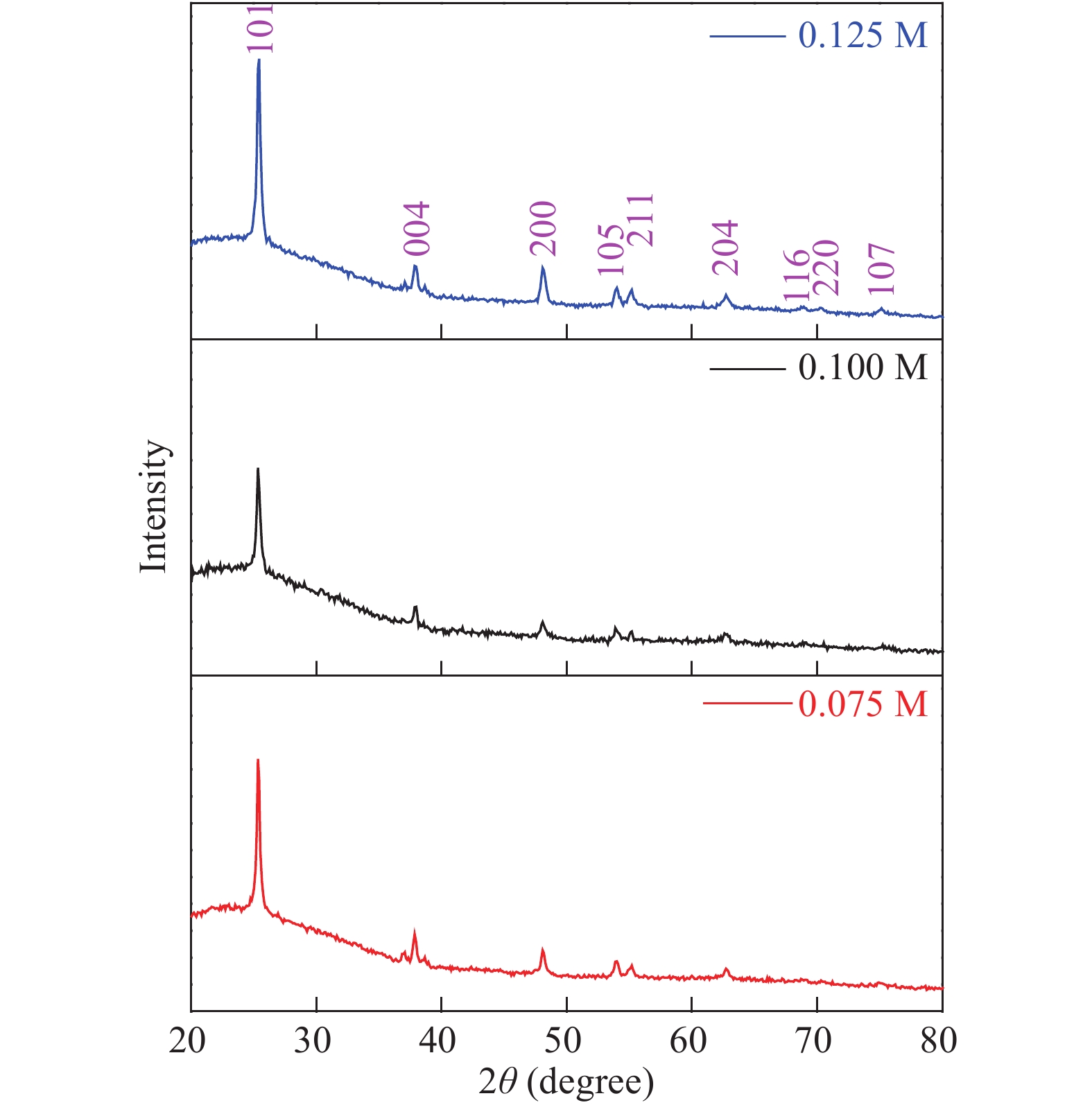
 DownLoad:
DownLoad:

